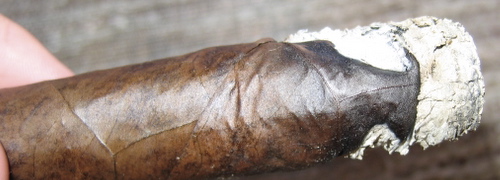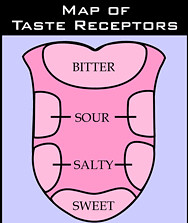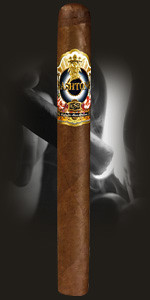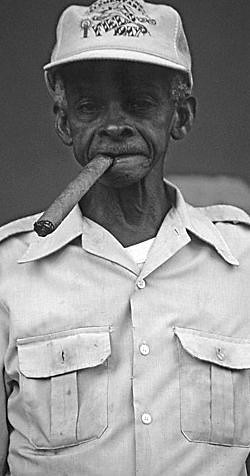Stogie Reviews: Davidoff Grand Cru No. 3
3 Aug 2006
 In Monday’s post, I told you how Mike Copperman of Bethesda Tobacco welcomed us into his fine store for a private cigar tasting. I also told you a little about one of the extraordinary smokes he shared with us that afternoon, the elegant Davidoff Gand Cru No. 3. Since it was one of the finest stogies I had ever enjoyed, I thought it merited its own review.
In Monday’s post, I told you how Mike Copperman of Bethesda Tobacco welcomed us into his fine store for a private cigar tasting. I also told you a little about one of the extraordinary smokes he shared with us that afternoon, the elegant Davidoff Gand Cru No. 3. Since it was one of the finest stogies I had ever enjoyed, I thought it merited its own review.
This five inch by 43 ring gauge Dominican is a medium to mild-bodied smoke with a smooth, attractive, caramel-colored wrapper. While most (even premium) cigars use two pieces of tobacco to connect the wrapper to the cap, the entire outer surface of this Davidoff is hand-made from one contiguous tobacco leaf – a skill most rollers cannot achieve.
With that in mind, instead of whipping out a double guillotine and slicing off too much premium tobacco, I used my fingernails to puncture a small hole in the cap and expose the cigar’s filler (a method that I highly recommend if you have a terrific cigar). I subsequently slowly and meticulously lit the foot with a wooden match.
What followed was an explosion of delicate toasty notes, particularly hints of sweet hay. And when I took the first puff, I could tell this was truly a match made in heaven. The delicate blend of salty Olor, acidic San Vicente, and peppery Piloto Cubano tobaccos yielded a unique harmonious flavor pleasing to the whole palate. This symphony of tastes remained fairly constant throughout the smoke, and the cigar maintained a true pull and an even burn to the end.
This stogie’s only drawback is that it’s quite expensive (you can expect to pay about $13 apiece). But you really get your money’s worth: Davidoff’s 72-point inspections are unparalleled in the industry. Also, keep in mind this is not for you if you’re looking for something to knock you on your ass. Despite its plethora of complex flavors, it’s still a very smooth, graceful, and mild smoke.
I therefore enthusiastically give the Davidoff Grand Cru No. 3 a perfect five out of five stogies, a first for StogieGuys.com.

-Patrick A
Tags: cigars

 So you’re enjoying a cigar, maybe a bit distracted, and suddenly you notice it has an uneven burn. This happens to everyone, but what’s a Stogie Guy to do?
So you’re enjoying a cigar, maybe a bit distracted, and suddenly you notice it has an uneven burn. This happens to everyone, but what’s a Stogie Guy to do? Finally, once you’ve rid your stogie of the uneven burn, monitor it carefully to avoid further predicaments. Happy smoking!
Finally, once you’ve rid your stogie of the uneven burn, monitor it carefully to avoid further predicaments. Happy smoking! In a bombshell development that yielded both subdued prayers and
In a bombshell development that yielded both subdued prayers and  For those of you who haven’t yet been lucky enough to meet him, Mike Copperman is a cigar god amongst men. This pleasant and approachable tobacconist at
For those of you who haven’t yet been lucky enough to meet him, Mike Copperman is a cigar god amongst men. This pleasant and approachable tobacconist at  It’s amazing how refined your palate can be if you (1) pay attention to the geography of your tongue, (2) smoke through the nose (no, it’s not inhaling, Stogie Tip forthcoming), and (3) have a human cigar encyclopedia at your disposal.
It’s amazing how refined your palate can be if you (1) pay attention to the geography of your tongue, (2) smoke through the nose (no, it’s not inhaling, Stogie Tip forthcoming), and (3) have a human cigar encyclopedia at your disposal. But the best tip Mike shared with us is much less technical. He explained that the greatest sense one needs in order to enjoy cigars is not on the tongue or in the nose…It’s between the ears. In other words, the more you know about tobacco and cigar composition, the better tools you have with which to appreciate each smoke.
But the best tip Mike shared with us is much less technical. He explained that the greatest sense one needs in order to enjoy cigars is not on the tongue or in the nose…It’s between the ears. In other words, the more you know about tobacco and cigar composition, the better tools you have with which to appreciate each smoke. 1) Over the past few months, we’ve been getting emails inquiring about the long-awaited release of the
1) Over the past few months, we’ve been getting emails inquiring about the long-awaited release of the  The cigar had an attractive Connecticut wrapper, except for two strange black blemishes. I
The cigar had an attractive Connecticut wrapper, except for two strange black blemishes. I 
 As any Stogie Guy should know, when it comes to cigars, thicker isn’t necessarily better. Each year, nonetheless, stogies get fatter and fatter…and this alarming trend towards quantity from quality is taking root in the cigar world with lightning speed.
As any Stogie Guy should know, when it comes to cigars, thicker isn’t necessarily better. Each year, nonetheless, stogies get fatter and fatter…and this alarming trend towards quantity from quality is taking root in the cigar world with lightning speed. But before we jump headfirst on the thicker-is-better bandwagon, let’s not forget some oft-overlooked vital facts. Fat cigars are awkward in the hand and tragically uncomfortable in the mouth. And these mammoths tend to burn so cool they are often difficult to keep lit. Finally, and perhaps most importantly, their behemoth size actually tempers most of their flavors.
But before we jump headfirst on the thicker-is-better bandwagon, let’s not forget some oft-overlooked vital facts. Fat cigars are awkward in the hand and tragically uncomfortable in the mouth. And these mammoths tend to burn so cool they are often difficult to keep lit. Finally, and perhaps most importantly, their behemoth size actually tempers most of their flavors. Patrick Ashby
Co-Founder & Editor in Chief
Patrick Ashby
Co-Founder & Editor in Chief Patrick Semmens
Co-Founder & Publisher
Patrick Semmens
Co-Founder & Publisher George Edmonson
Tampa Bureau Chief
George Edmonson
Tampa Bureau Chief